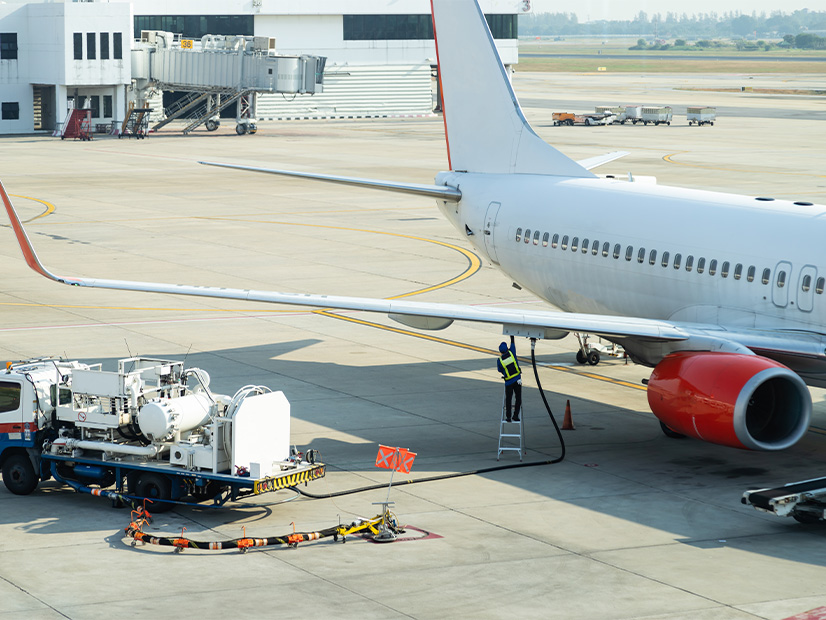The Department of the Treasury and the Internal Revenue Service on Dec. 15 released guidance on the sustainable aviation fuel (SAF) tax credit from the Inflation Reduction Act, meant to encourage clean fuel for airplanes.
Treasury worked closely on the guidance with other cabinet agencies, including EPA and the departments of Transportation, Agriculture and Energy, Treasury Secretary Janet Yellen said in a statement.
“The Biden administration is driving American innovation to create good-paying jobs and help the U.S. clear hurdles in our clean energy transition,” Yellen said. “Incentives in the Inflation Reduction [Act] are helping to scale production of low-carbon fuels and cut emissions from the aviation sector, one of the most difficult-to-transition sectors of our economy.”
The credit incentivizes production of SAF that achieves lifecycle greenhouse gas emissions cuts of at least 50% compared to standard jet fuel refined from oil. Producers of SAF are eligible for a tax credit ranging from $1.25 to $1.75/gallon.
Fuel that cuts GHG emissions by 50% will be eligible for a $1.25/gallon credit and an additional cent per gallon for every 1% more, up to 50 cents/gallon, Treasury said.
Multiple kinds of fuels are eligible for the credit, including biomass-based diesel, advanced biofuels, cellulosic biofuels and cellulosic diesel, all of which have been approved by EPA under its Renewable Fuel Standard.
Fuels that achieve a 50% or greater reduction in lifecycle emissions under the most recent Carbon Offsetting and Reduction Scheme for International Aviation will continue to qualify for tax credits.
EPA, DOT, USDA and DOE also committed to releasing a new version of DOE’s Greenhouse gases, Regulated Emissions and Energy Use in Transportation (GREET) model by March 1, 2024. Pending additional guidance from Treasury, the new model will offer other ways for SAF producers to determine the lifecycle emissions for their fuels, the department said.
The updated model will use new data and science, including new modeling of key feedstocks and processes used in aviation fuel. It will also integrate other categories of indirect emissions, like crop production and livestock activity, and carbon-abatement strategies such as carbon capture, renewable natural gas, renewable electricity and climate-smart agricultural practices.
“President Biden’s Investing in America agenda is creating pathways and incentives for innovators to create a cleaner, more sustainable future,” said Energy Secretary Jennifer Granholm. “Sustainable aviation fuel will provide low-carbon fuel made here in America to help decarbonize the hardest-to-reach areas in the transportation sector, and DOE is committed to supporting this effort, which will lead to cleaner skies for all.”
The Clean Air Task Force said the guidance on the SAF credit further capitalizes on the Inflation Reduction Act’s enormous potential to mitigate climate change by requiring fuel producers to show their products actually deliver clear environmental benefits.
“The climate impact of the SAF credit depends in large part on Treasury’s ability to identify and reward those biofuels that actually reduce net emissions to the atmosphere,” CATF Director of Transportation Decarbonization Jonathan Lewis said in a statement. “Today’s guidance shows that the government is taking that job seriously.”

